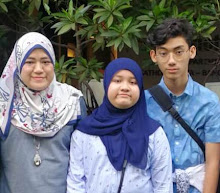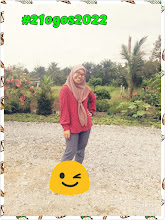Vietnamese Girls, Ao Dai and Broken Rice
Assalamualaikum. I am still on leave taking care of my children at kampong while my wife taking leave and balik her kampong visiting her family n relatives. Disebabkan anak-anak dah tidur dan isteri tiada kat sini saya nak mengambil peluang berkongsi cerita mengenai “Awek Vietnam”.
I really don’t know whether is it me or it’s really something about Vietnam girls that make them really attractive especially donning their iconic traditional costume, a tight fitting ankle length silk dress with long sleeves worn over loose pants reaching the floor. The dress splits into a front and back panel from a bit higher than waist line exposing a little bit of flesh. This traditional costume called “ao dai”, pronounced as “ow zai” in Saigon really symbolizing beauty, elegance, attractiveness and Vietnamese identity and femininity. Some say the ao dai current form has only emerged during the time of French colonisation, but I couldn't care less.
The ao dai is said to “cover everything but hide nothing’’ because though it covers most parts of the body, it is a sensual outfit and promotes all the beautiful curve of a Vietnamese woman with its tight fit and long split at both sides. You will be mesmerised by their elegance, when they walk, a split panel is like waving, and it really demands your attention.
But be careful not to disturb a wrong girl or someone's wife! The colour of ao dai is supposed to vary with age and marital status. Young girl and school children normally wear white colours, symbolizing purity. Older but unmarried girls wear soft pastel colours, while older married women usually wear ao dai in richer and darker colours.
Another interesting fact about Vietnam girl in ao dai is their size. Makcik, kakak and adik-adik from Malaysia will encounter an extremely frustrating experience if they are looking for ready-made ao-dai in market. Most of the Vietnamese lady I would say weight less than 45kg with size S or M. Their male counterparts are also not bad with their body weight. A small (or big to be honest) difference with Malaysian although we both consume rice as staple food.
Checking with WHO Data on country prevalence of obesity, adult 18 years and above with BMI more than 30, surprisingly Vietnam is at the bottom from 191 countries, the country with the least prevalence of obesity (data for the 2016 published in 2017) overall only 2.1% Vietnam population have obesity and only 1.6% women have obesity lower than 2.6% for men. Ethiopian was rank at no 183 and Malaysia at no. 125. Top 15 countries with prevalence of obesity were monopolised by Polynesian island countries, USA and Arab countries.
Reasons for their low obesity rate might be due to their healthy lifestyle and diet (of course, what else). Based on my limited observation, their street foods are more to steam, boil and roast/grill with fresh vegetables rather than fried, processed and fat-rich food. Food such as cuon (spring roll made of rice paper with fresh vege, meehoon or beef), pho bo (beef noodle soup) and com tum(broken rice with vege and roasted beef/pork) are favourite among locals. Sadly, I did not have an opportunity to test all these because I was busy with Malaysian food.
Interesting to note, although Vietnam is an exporter of rice, they are not crazy about rice. I mean their favourites are not white long grain with aroma, basmati etc.. but broken rice and rice-based products such as rice paper and meehon. They love coffee and claimed that Vietnam coffee is one of the best in the world (they export coffee) and no McDonald and KFC in sight.
So, if you have a chance, do visit Vietnam to witness how they have emerged as one of the Asia powerhouses despite being almost ruined by civil war in the 60s to 70s....


















.png)





6 Comments
seriously interesting! that ao dai looks like our cheong sam x punjabi but in a very long length..taking into note about the colours, looks like most of the girls in the picture are still unmarried..
ReplyDeletebroken rice is a new phrase for me, I thought they would go for brown rice as substitute of normal white, rupanya lain ya...
tapi pinggang tak berapa ramping cikgu nak pakai ao dai ni hahahahaha
ReplyDeletememang cantik baju ao dai tuh, teringat beberapa tahun lepas fashion baju tu pun terkenal di malaysia dan ramai yg pernah ada baju ini, saya setuju orang vietnam sangat sukakan ulaman, hampir semua makanan nya berasaskan sup dan ulaman, teringat popia vietnam yg sedap tp penuh dengan ulaman
ReplyDeletesedapnya pho...kopi vietnam...
ReplyDeletemantap sungguh awek Vietnam...
ReplyDeleteteruja nak dapat isteri begitu hahahaha
Agak2 boleh tak sy jumpa jodoh dari Vietnam hehe
ReplyDeleteThanks for leaving your comment. Please come again. I will visit your blog soon.